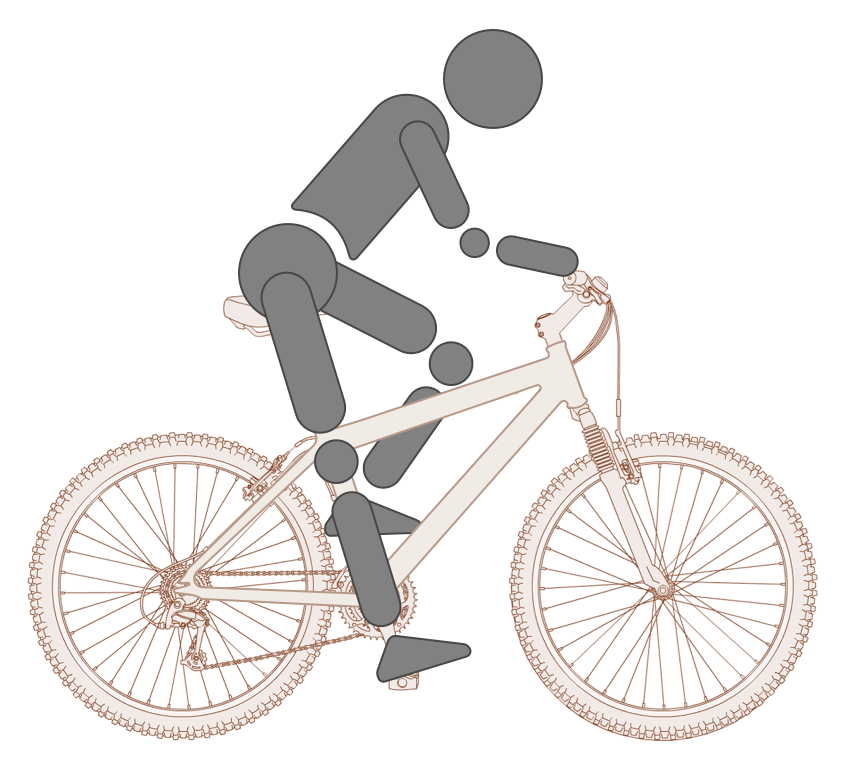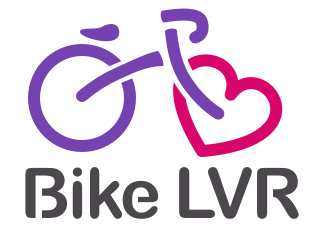Ever had that nagging feeling that your bike might be a tad too large for you? It’s a common concern among cyclists, and it’s crucial to address it for both comfort and safety. If you’re struggling with steering, experiencing discomfort, or just can’t seem to touch the ground when you’re on the saddle, it’s time to fix the issue.

How to Fit Your Bike Properly
Bike Fitting: Upper Body Position
Proper bike fitting is essential to ensure you have an enjoyable and safe riding experience. For your upper body, finding the right balance between comfort and control is key. The goal is to have a posture that allows for efficient riding without straining your muscles or joints. For road bikes, your torso will form a 45-degree angle with your hips, and a 90-degree angle with your arms. For eBikes or Mountain bikes this is less important as you tend to ride upright or out of the saddle.
You Have a Long Torso for Your Height
With a long torso, the frame size and bike geometry become especially important. If I find myself constantly stretching to reach the handlebars or experiencing back pain during rides, it’s a sign that the current setup isn’t optimal for my body type. In such cases, a frame with a longer effective top tube (ETT) can provide the additional space needed for comfort. Adjusting the stem length can also bring the handlebars closer, which minimizes the strain on my back and shoulders.
Bike Frame Standover Height
Standover height is the distance from the ground to the top of the frame’s top tube. It’s vital to ensure that when I stand over the bike, there’s enough clearance between my body and the frame to prevent any uncomfortable or dangerous contact if I need to stop suddenly.
Not Enough Standover Clearance
If there’s not enough standover clearance, it’s a clear frame size issue. For my safety and to prevent injury, I need to be able to plant my feet firmly on the ground with 1″ on a road bike and 2″- 3″ (Less clearance is Ok if it has suspension) for a mountain bike between my body and the bike. If the clearance isn’t sufficient, it’s likely that the bike is too big for me and I should consider a frame size that offers better standover height relative to my inseam.

Bike Seat (Saddle) Height
The height of the bike seat is critical for pedaling efficiency and knee health. A saddle that’s too high can lead to overextension of my knees and a loss of power, while a seat that’s too low can cause increased strain on my knee joints.
To achieve the right saddle height, I perform a heel-to-pedal test: I place my heel on the pedal at its lowest position; my leg should be fully extended without having to rock my hips. This height ensures that when I’m actually pedaling with the balls of my feet, I have the correct slight bend in my knees. Plus, having the right bike geometry accounts for my riding style and ensures I’m positioned for optimal performance and comfort.
As my journey with cycling continues, I’m continually learning and adjusting. Understanding that each rider is unique, it’s clear that personalization is key when fitting a bike properly. My experience has taught me that taking the time to get these adjustments right significantly enhances my ride.
How Bikes are Sized
Getting your bike size right is crucial for a comfortable and they generally come measured in centimeters for road bikes 47 cm – 62 cm and in three sizes S/M/L for mountain bikes but can range from XS (extra small), S (small), M (medium), L (large) and XL (extra large). Remember that it’s not just about the height of the frame but also the fit for your upper body and the standover clearance.
Factors favoring sizing up:
- Height: If you fall outside the typical range for a specific size, you might need to go up. For example, someone on the taller end of a Medium size range might be more comfortable on a Large.
- Riding style: If you prefer high-speed descents and stability over tight turns and maneuverability, a larger bike with a longer reach and wheelbase might offer better control.
- Torso length: A longer torso can feel cramped on a smaller bike, especially with dropper posts. Sizing up can ensure a more comfortable riding position.
- Bike type: Enduro and downhill bikes often lean towards larger sizes due to their focus on stability and control on gnarly terrain.
- Future upgrades: If you plan on adding wider handlebars or running a large bags, sizing up could give you more clearance.
Factors favoring sizing down:
- Technical terrain: A smaller bike is more nimble and easier to maneuver in tight trails and switchbacks. This can be advantageous for technical riding.
- Climbing: A smaller bike generally feels lighter and more responsive, making climbs easier.
- Insecurity at height: If you’re nervous about high stands or steep drops, a smaller bike can feel more reassuring.
- Personal preference: Some bike riders simply prefer the feel of a smaller bike, regardless of other factors.
Tips for making the decision:
- Consult a size chart: Most manufacturers provide size charts based on height and inseam. This is a good starting point, but remember it’s not an absolute rule.
- Get a professional fit: A bike shop can perform a professional fit to determine the ideal size and adjustments for your body and riding style.
- Test ride different sizes: If possible, try riding bikes in both sizes you’re considering. This will give you the best feel for which one fits you better.
- Don’t be afraid to go against the chart: If you fall between sizes or a specific size feels off, trust your gut feeling and choose the one that feels most comfortable and confident on.
Frequently Asked Questions
Do pros ride smaller frames?
Yes, professionals often choose slightly smaller frames than recommended for the general public. They compensate with a longer stem to achieve an aggressive, aerodynamic riding position.
What are the benefits of a larger bike frame?
A larger bike frame can provide a more stable ride, potentially offer more comfort due to a less aggressive position, and may accommodate riders with longer legs or torsos better.
Is it better to buy a bike that is too big or too small?
Neither is ideal. A bike that is too big can be difficult to control and uncomfortable, increasing the risk of injury, while a bike that is too small can lead to cramped riding posture and inefficient pedaling.
How do I know if a bike is too big?
If you’re overreaching and your torso and arms are fully extended while riding, your bike may be too big. Other indicators include difficulty touching the ground and feeling stretched out on the bike.
What size bike do I need for my height?
Bike size depends on your height and inseam length. Consult size charts specific to the bike brand and model, or get a professional fitting to determine the most comfortable and efficient bike size for you.
